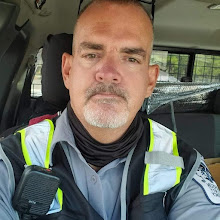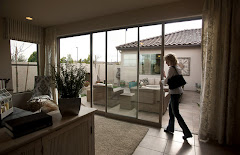Driving Castle Hot Springs Road
East to West
This sign is a mile from any water and they still tell you no Diving or Jumping.
Saguaros have a relatively long life span. They take up to 75 years to develop a side arm. The arms themselves are grown to increase the plant's reproductive capacity (more apices equal more flowers and fruit). The growth rate of saguaros is strongly dependent on precipitation; saguaros in drier western Arizona grow only half as fast as those in and around Some specimens may live for more than 150 years The spines on saguaro having a height less than 2 meters grow rapidly, up to a millimeter per day. When held up to the light or bisected, alternating light and dark bands transverse to the long axis of spines can be seen
Opened in 1896,
Castle Hot Springs was the first resort in the state of Arizona and one of the most beloved. Located 50 or so miles northwest of Phoenix in the flood plain of Castle Creek, the resort's cluster of turn-of-the-century buildings and hundreds of swaying palm trees look like a mirage in the desert to the unprepared traveler.
The hotel has been unoccupied for more than a decade, and its interiors have been left to bugs and bats and cluttered with junk.
.jpg)
The old hotel came into existence because of a quirk of nature: From the hillside above it, 120-degree water gushes out of the ground at the exuberant rate of 400,000 gallons a day. The Apaches living in the area had long known about the springs, which they considered medicinal and possibly sacred. Once the Apaches had been encouraged to leave, white settlers took to the waters with the same enthusiasm. In the late 19th century, people had not yet been convinced that tuberculosis came from a bacillus, rather than damp nights or being a poet. For a number of years, "lungers" had been flocking hopefully to the Southwest for the nice fresh air and sunshine. The sick pitched tents around the Castle Creek springs, then someone was inspired to open a boarding house, and soon after, a couple of men with a nose for business trends started a hotel.
.jpg)
President John F. Kennedy spent time his there during World War II, when Castle Hot Springs was leased to the military to house recuperating pilots. Castle Hot Springs also served as the first territorial capital of Arizona as well as a retreat for many wealthy businessmen, politicians, and even presidents of the United States.
You can get to this area by taking the Lake Pleasant Road off of Highway 74. This road is closest to Phoenix. Don't go into the Lake Area itself, simply keep going North until you get to the end of the pavement, keep going North and you will see signs that say Castle Hot Springs Road. Then go West toward Castle Hot Springs.
You can also get to this area by taking the Castle Hot Springs Road off of Highway 74. This road is closest to Wickenburg.
Either road you take will connect to the other, so if you want to take either one, it really does not matter. The road to Lake Pleasant Road off of Highway 74 is closer to Castle Hot Springs.
The tour on this page will start from the Castle Hot Springs Exit at Highway 74 going from the West to the East toward Lake Pleasant. We will cross a clearly marked area leaving Maricopa County and entering Yavapii County. I will start photos on the page from about two miles past that point.
Full Story
.jpg)
Lots Of Keep Out Signs No Stopping Signs
.jpg)
The main building at Castle Hot Springs burned to the ground. The fire took place in December 1976, only days before the resort was to open for the season.
President John F. Kennedy spent time his there during World War II, when Castle Hot Springs was leased to the military to house recuperating pilots. This special service earned Castle Hot Springs a special dispensation, allowing the American flag to be flown 24 hours a day on nearby Salvation Peak. Today the flag is maintained by the Boy Scouts of America.
.jpg)
.jpg)
.jpg)
The Old Barn
The Old Barn on Castle Hot Springs Rd.
Old Junked Truck on the Hill
Old Junked Cars
Spring Water
Some of the water that flows from these artesian wells is seasonable depending upon rainfall in the area that feeds the springs. You will also notice that there appears to be a lot of minerals in the water probably from the multi-colored rock formations surrounding Castle Creek and some of the other creeks that supply water to the area.
foamy water
Mike shooting photo's off the Castle Hot Springs Road
Darren
Looking inside a Oak Tree
The end!!

.jpg)
.jpg)
.jpg)

.jpg)
.jpg)
.jpg)
.jpg)
.jpg)
.jpg)
.jpg)
.jpg)
.jpg)
.jpg)
.jpg)
.jpg)
.jpg)
.jpg)
.jpg)
.jpg)
.jpg)
.jpg)
.jpg)
.jpg)
.jpg)
.jpg)
.jpg)
.jpg)
.jpg)
.jpg)
.jpg)
.jpg)
.jpg)
.jpg)
.jpg)
.jpg)
.jpg)
.jpg)

.jpg)
.jpg)
.jpg)
.jpg)
.jpg)
.jpg)
.jpg)
.jpg)
.jpg)
.jpg)
.jpg)
.jpg)
.jpg)
.jpg)
.jpg)
.jpg)
.jpg)
.jpg)
.jpg)
.jpg)
.jpg)
.jpg)
.jpg)
.jpg)
.jpg)
.jpg)
.jpg)
.jpg)
.jpg)
.jpg)
.jpg)
.jpg)
.jpg)
.JPG)
.jpg)
.JPG)
.JPG)
.jpg)
.jpg)
.jpg)
.jpg)
.jpg)
.jpg)
















